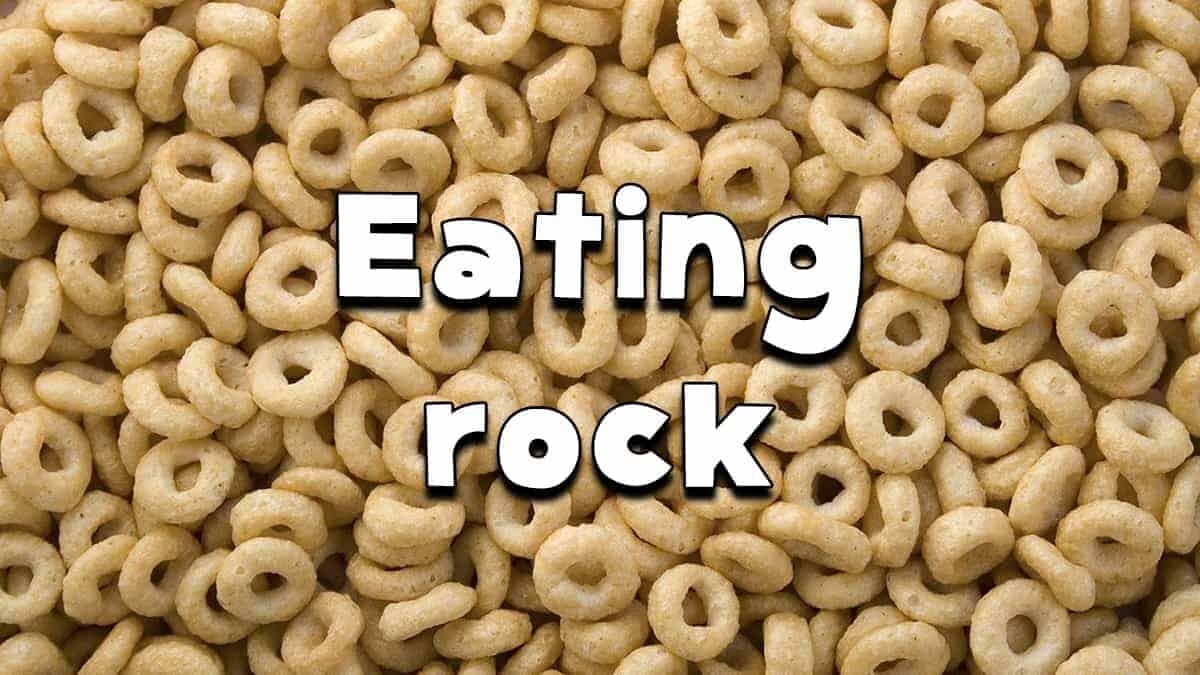 Rocks are made of minerals, which are solid chemical elements or compounds that occur naturally. They may be hard, such as granite, limestone and coal, or soft, such as sand and clay, but are always made up of minerals.
Rocks are made of minerals, which are solid chemical elements or compounds that occur naturally. They may be hard, such as granite, limestone and coal, or soft, such as sand and clay, but are always made up of minerals.
It may seem strange, but we need rocks for all our meals. They are used to make the crockery and cutlery we use at meal tables. More surprisingly, they – or the minerals they contain – are present in many of the things we eat and drink.
Eating rocks can be good for you, but only the right ones!
Do we really eat rocks as well, or the minerals we find in rocks?
Yes we do, because many breakfast cereals contain up to six elements (iron, zinc, calcium, potassium, phosphorus and magnesium) which are needed to keep our bodies healthy. All these elements come from minerals in rocks so, with every mouthful of cereal, we are eating rocks as part of our daily diet.
Look at your cereal packet to see what elements it contains (they may be listed as ‘minerals’). Where do you think these may have come from? Try to find out how the elements found in cereals help to keep us healthy. Possible clues: bone formation, muscle movement.
We add salt to many foods during cooking, or sprinkle salt on our meal at the table. Salt is also used to preserve food. All the world’s salt is dissolved from rocks, and it collects in salty waters of the seas and oceans. It’s for this reason that a lot of homes use water softeners, the minerals in the water cause problems with the plumbing.
 We can obtain salt by evaporating sea water, as is done in many countries, or by taking rock salt out of the ground, as we do in Britain. Rock salt forms when seas dry up to leave large deposits of salt. This happened in seas that covered parts of Britain 200-250 million years ago, when the country was near to the equator, and the salt became buried under later sediments. We take salt out of the ground by drilling boreholes to pump water down into the layers of rock salt to dissolve it and pump the brine back to the surface.
We can obtain salt by evaporating sea water, as is done in many countries, or by taking rock salt out of the ground, as we do in Britain. Rock salt forms when seas dry up to leave large deposits of salt. This happened in seas that covered parts of Britain 200-250 million years ago, when the country was near to the equator, and the salt became buried under later sediments. We take salt out of the ground by drilling boreholes to pump water down into the layers of rock salt to dissolve it and pump the brine back to the surface.
If you live near the sea, collect some sea water (with your teacher or parent) and evaporate it in a dish in the classroom: what is left in the dish? Salt is found in sea water and in some rocks, as rock salt: Is there a link between these two facts? Do you know where rock salt is found in Britain? Can you think of any other uses for salt?
You might think that bread is made just from flour, but it also contains a small amount of salt, limestone (to make it white) and gypsum. Gypsum is also used in small amounts in the making of many types of ice cream, cheese and some other foods. Gypsum is found along with salt in rocks that formed in the seas that covered parts of Britain 200-250 million years ago.
Do we drink rocks too?
About a third of all our drinking water is taken from rocks under the ground using boreholes and springs. This water contains lots of elements that have been dissolved out of the rock. These elements include calcium (rich in waters from limestone areas, and the cause of hard water), sodium, potassium and magnesium. They are important for our health, and give the water its special taste.
Look at the label on a range of bottled mineral waters to see what elements they contain. Look for differences between the different bottles- what might be the cause of these differences? Do you think these elements affect the taste of the water (try tasting distilled water!). Do you think the elements are important to our health?
We don’t eat paper, but we use it during meals – and it contains rocks too!
We use paper, or cardboard, for the packaging of foods such as cereals. We often use paper tissues to mop up the mess when baby knocks a glass of fruit juice over dad’s tie! Most types of paper contain not only wood pulp but also some clay. The clay provides weight and ‘glossiness’ to the paper – the more clay, the more glossy the paper. Cereal packets have high clay content to provide weight and a good surface to print on.
Get a glossy magazine and fold a newspaper so that it is the same size and thickness as the magazine. Is there any difference in weight between the two items? If so, what do you think is the reason for this difference, and what effect has it had on the quality of the paper?
> Visit the Geology Rocks homepage
> Download the free Geology Rocks podcast from iTunes




